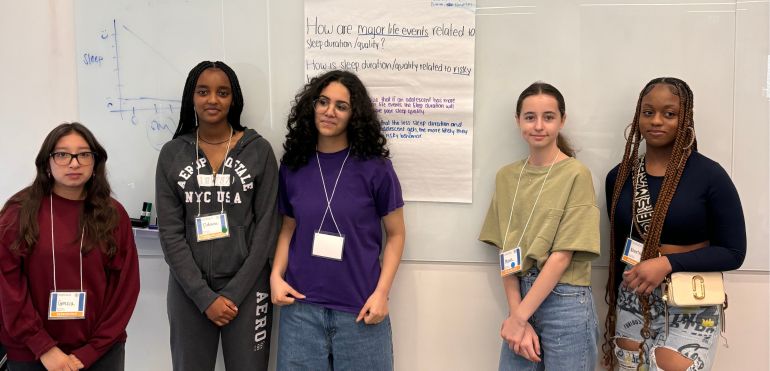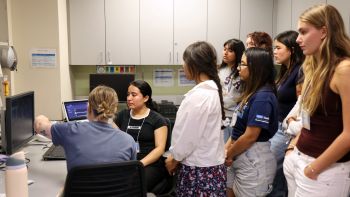This post was written by high school students from the Summer Research Boot Camp in the lab of Andrew Fuligni at UCLA, supported by UCLA Center for the Developing Adolescent, and led by Ava Trimble, Jasmine Hernandez, and Clare McCann.
By Maria Shuboderova, Jaleon Nocentelli, Kourtni Preston, Martha Valkov, and Grecia Velasco
Ever wondered what’s going on in the adolescent brain? If so, you’re not alone. As we have had the chance to experience an eye-opening Research Boot Camp on brain development at UCLA this summer, we’re excited to share some insights and why they matter for anyone working with youth—from researchers to policymakers.
What We Learned at UCLA’s Research Boot Camp on Adolescent Development
We learned that our brains are not static; they evolve dramatically from childhood through adolescence. UCLA’s Research Boot Camp on Adolescent Development, taught by Dr. Andrew Fuligni, Clare McCann, Ava Trimble, and Jasmine Hernandez, revealed that this transformation is like an upgrade to a high-performing computer. Specifically, the prefrontal cortex, responsible for decision-making, impulse control, and social behavior, is experiencing significant development until it reaches its full potential in the mid-20s. On the other hand, the limbic system, which handles emotions and rewards, is more active during adolescence. The contrast between the mature limbic system and the still-developing prefrontal cortex explains why risk-taking and its outcomes can be so appealing and why emotions might seem so overwhelming.
Furthermore, the boot camp explored the process of studying various factors contributing to said development, including sleep patterns, duration, and quality. To examine these factors, researchers utilize numerous methods, from recording body system and brain activity during sleep through polysomnography (PSG) to self-reported questionnaires such as the Pittsburgh Sleep Quality Index (PSQI).
Why It’s Important
Understanding these brain changes helps us recognize that adolescent behavior isn’t just about being moody or rebellious—it’s a natural part of brain development. This perspective can foster more empathy and patience in adults working with teens. For instance, knowing that impulse control is still developing can guide educators and parents in setting realistic expectations and providing supportive environments. Moreover, knowing that the prefrontal cortex is still maturing suggests that interventions aimed at teaching decision-making skills should be tailored to the developmental stage of the youth. It’s not about giving up on teenagers, but about meeting them where they are in their brain development journey.
What We Can Do With This Information
Implementing strategies for assisting teens in getting proper sleep is imperative. Apps that track sleep cycles could help adolescents learn about the recommended sleep cycles and later help with their schedules. In addition, providing instruction about sleep in schools and areas where most adolescents spend their time allows for exposure to such crucial information in areas outside of the home. For instance, we can design curriculums and teaching methods that align with adolescents’ cognitive strengths and areas of development in education. Integrating activities that engage the prefrontal cortex, like problem-solving and critical-thinking exercises, can be beneficial. This brain development insight can help us create more targeted and effective strategies.
Our Final Thoughts
Having explored the intricacies of adolescent brain development that we learned during our time at UCLA’s Center for the Developing Adolescent Boot Camp, we were exposed to more advanced educational settings and had a deeper understanding of what it is like to be a student at a university. Additionally, obtaining hands-on experience by keeping sleeping logs and reviewing the data allowed us to reflect on ways we can adjust factors in our life for the benefit of better quality of sleep. Thus, we hope this information sparks new ideas and approaches in future works. Our goal is to use this knowledge to create accessible environments where young people can thrive, make informed decisions, and navigate their teenage years with greater support and understanding.



